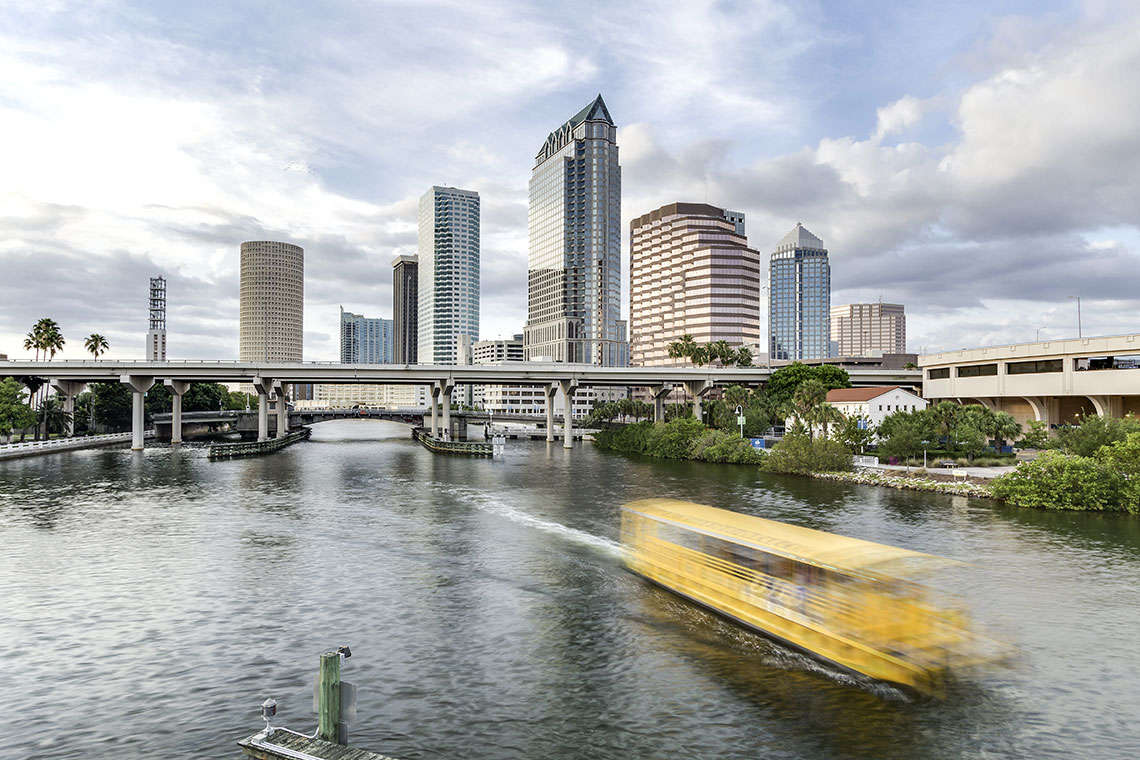
Tampa isn’t exactly known for its bountiful public transit, and between the relatively slim options for bus and train travel and our city’s high population, traffic can be nightmarish — and dangerous — at times. However, a lot has been done this year to try and improve mass transit options and reduce congestion on Tampa’s roads.
The desire to avoid Tampa rush hour traffic is an understandable one, given that Tampa ranked 15th for worst traffic congestion in the U.S., according to a 2015 report by GPS manufacturer TomTom International. And traffic is only likely to become worse as our city’s population continues to boom.
Fortunately, Tampa has launched new forms of public transit and expanded existing transit over the past 12 months in an effort to provide more viable options for commuters. Today, we review some of Tampa’s biggest public transit improvements in 2016.
Launching the Tampa High Speed Ferry
One of the biggest additions to Tampa’s public transit deck was the launch of the Tampa Bay High Speed Ferry in November. The six-month pilot program trial for the High Speed Ferry was approved in August. The High Speed Ferry cuts across the Bay to deliver passengers between St. Petersburg and Tampa in under an hour.
In addition to being an alternate traffic-free route between the two cities, the Tampa Bay High Speed Ferry Project also aims to provide a responsible way for people to party in St. Pete and Tampa’s downtown areas.
Considering the Tampa Bay area’s high DUI statistics, this could be potentially lifesaving. In 2013, more people died per capita in Hillsborough County due to drunk driving than in the state as a whole, according to data from the National Highway Traffic Safety Administration.
Thousands of people boarded the ferry to travel across the bay in its first month of service alone, but there are still 5 months left in the pilot program to decide if the ferry will become a permanent public transit option for residents.
Expanding TECO’s Schedule
The TECO streetcar has always been considered a quaint and fun tourist attraction, but this year the Hillsborough Area Regional Transit Authority launched a six-month pilot program to make it much more than that.
The six-month pilot program, which launched in September, is a test to see if the streetcar could become a viable commuting option for residents. TECO now runs every 30 minutes from 7 a.m. to noon and every 20 minutes from noon to 10 p.m., which means commuters going between Downtown Tampa and Ybor City could ostensibly ditch their car and use the streetcar instead.
HART’s New Rideshare App
In addition to expanding TECO, HART also launched an app for their bus service in November. The app, called HyperLINK, allows bus riders to hail a driver to take them three miles to or from any major bus station at University of South Florida or Carrollwood for $3 a ride.
The app, which is the first of its kind in the country, is an attempt to improve current poor ridership numbers on HART buses by modernizing the service. HART believes that by removing inconveniences and obstacles from the equation, more Tampanians will choose to ride the bus over driving to work.
Riders can hail a driver through HyperLINK to avoid walking to and from the bus in hot and humid weather, for example. HyperLINK’s fleet is fully ADA-compliant, so individuals with disabilities who would otherwise find the distance to their nearest bus stop challenging can also benefit from HART’S bus service.
The Downtowner Electric Shuttle Returns
After six long years, free electric shuttles are back in downtown Tampa, according to the Tampa Bay Times. The Downtowner, a service funded by the Tampa Downtown Partnership, the city of Tampa, and local businesses, started back up in October.
The shuttle service, which operates 6 a.m. to 11 p.m. on weekdays and 11 a.m. to 11 p.m. on weekends, can be conveniently hailed by users via an app. It covers the central business district, University of Tampa, the Channel District, and the Tampa River Arts District.
The ultimate goal of the Downtowner is to help residents get around Tampa’s urban center without driving, potentially solving parking woes and alleviating traffic in downtown Tampa.
Until More Is Done, Car Accidents Are Still a Risk
How Tampanians get around has changed a great deal this year, but a lot more needs to be done before our city has a truly effective public transit system. Until then, heavy road congestion and car accidents will continue to be a daily risk for residents.
Have you recently been hurt in a car accident that was caused by another motorist? Read more to learn how our car accident attorneys in Tampa can fight for you to try and get you the compensation you need and deserve for your pain and suffering, medical bills, and more. If you are ready to pursue a claim, fill out our free, no-risk case evaluation form today.
comments